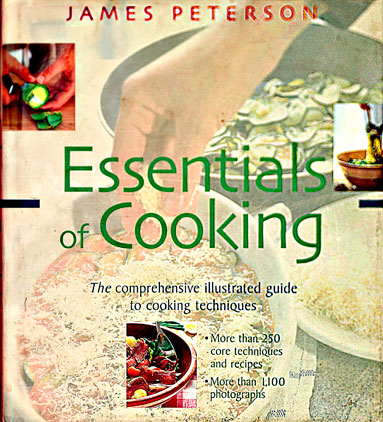While I’ve been making puff pastry for 30 years, until recently I was never entirely satisfied with the results. The essential insight came when we were making streudel for my new baking book in which a dough is pulled out and stretched until very thin and then used to enclose an apple mixture. It occurred to me that if I used this same dough to make puff pastry I might get better results. The results were astounding when I tried the new method.
Makes 1-1/2 pounds dough
1 cup all-purpose flour
1 cup cake flour
1/2 cup water
3 tablespoons vegetable oil
1 teaspoon salt
3/4 pound cold butter, each stick cut into 4 cubes
In a food processor, combine both flours, the water, the oil and the salt and process for 1 minute, or until the dough looks like gravel. Pull the dough out of the food processor and knead it on a work surface (no need for flouring) with the heel of your hand for 2 to 3 minutes, or until it pulls together into a single mass. Shape into a disk, wrap in plastic wrap, and refrigerate for at least 12 hours.
The next day, on a clean work surface, crush the butter with the heel of your hand and work it with your fingers until you feel no lumps. It should be smooth, spreadable, and have the consistency of buttercream. Wrap in plastic wrap and refrigerate for 15 minutes.
On a floured work surface, rolll out the dough into a rectangle about 18 inches long and 9 inches wide. Shape the butter into an 8-inch square and place it on one end of the rectangle, leaving a small border around the edges. Fold the uncovered half of the rectangle over the butter, covering it completely. Press around the edges to seal in the butter. Wrap in plastic wrap and refrigerate for 15 minutes. Don’t refrigerate for longer, or the butter will harden and you won’t be able to roll it out.
Gentlyk hammer on the package with a rolling pin and, when it softens, roll it, to spread it out into a rectangle about 18 inches long and 9 inches wide with the butter sealed inside. Run your hand along the surface of the rectangle to make sure the butter is spreading out evenly. Now, fold the rectangle as though you were folding a business letter: starting from a narrow end, fold the bottom third of the rectangle up, and then fold the opposite end down.
If the dough is still easy to work, roll it out into a rectangle and fold in the same way. IF it’s not easy to roll, wrap it and refrigerate it for 30 minutes or up to 12 hours and fold it in the same way. Make two imprints with your fingers to indicate that it has 2 “turns”. Wrap in plastic and refrigerate for at least 1 hour. Give the dough 1 to 3 turns–as many as you can get by with without it turning elastic–and and refrigerate for at least 30 minutes. Continue in this way until the dough has had a total of 7 turns.



Hi,
I really love Cooking (the book). I’m just beginning to really get into cooking and I have been loving the book.
I’ve been having trouble making the puff pastry. I followed the directions in Cooking as best as I could, but came up way short. I have a question about the turns. Once I have folded the dough in thirds, do I roll it as it is folded? Or, do I unfold it then roll it again? If it is roll it as it is folded, how do you keep the butter from coming out?
Thanks!
Hi Bradford,
Sorry for the long delay in responding to your message but I’m still dealing with how to work this thing. Yes, you roll it as folded; that’s the whole idea such that you’re multiplying the number of layres by 3 with each rolling. Hope that helps.
jim
Thanks Annette for looking at my blog. I like writing about kind of obscure things.
jim
One interesting thing I’ve discovered about puff pastry. If I use the technique described in this blog in which the basic dough (that exists before the butter is folded into it) is kneaded, the dough can come out tough if the flour is relatively high in gluten. To compensate for this, I give the pastry 7 turns instead of the traditional 6. This has the effect of actually making the layers that much thinner so they seem more delicate and fragile.